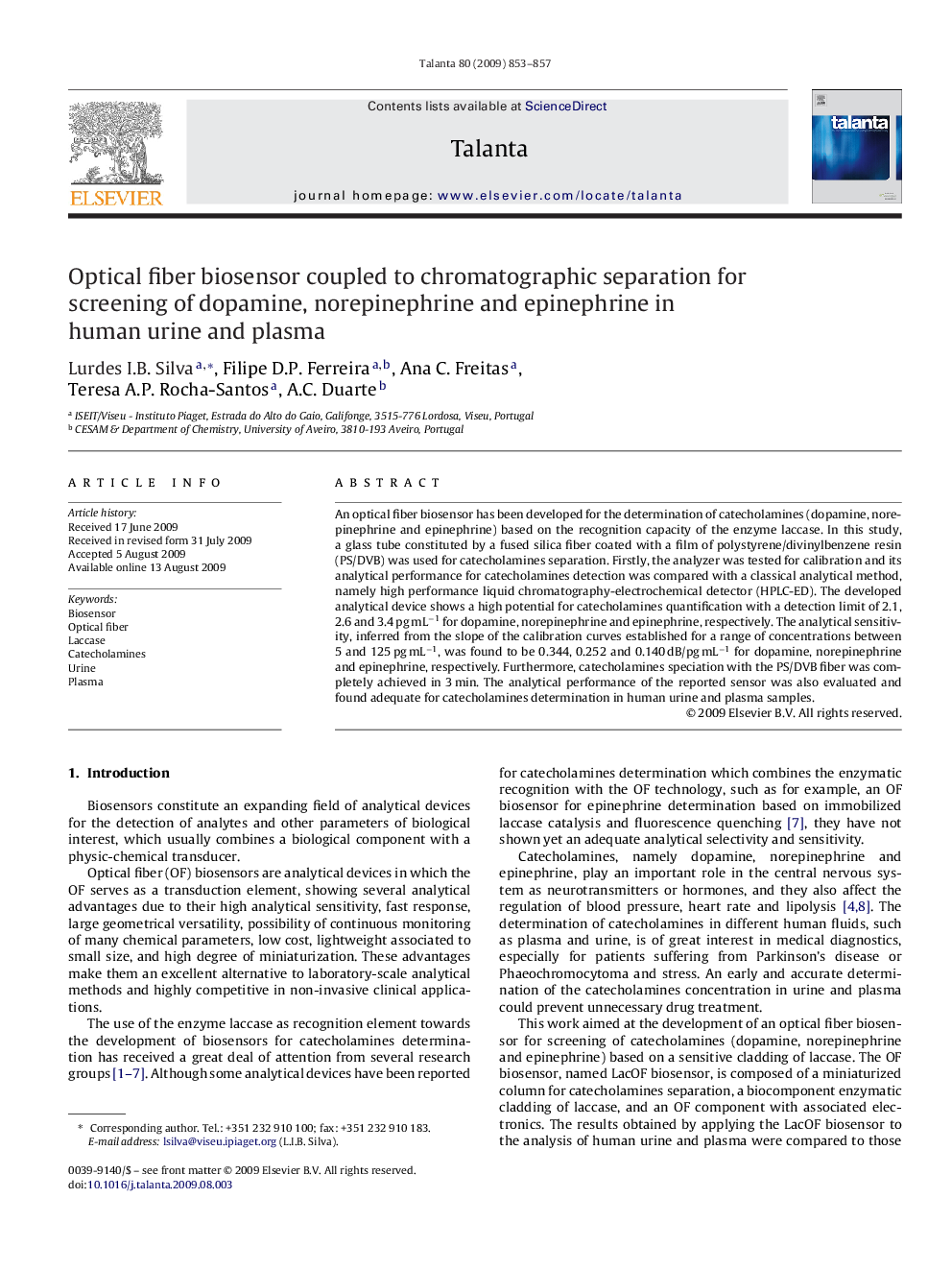| Article ID | Journal | Published Year | Pages | File Type |
|---|---|---|---|---|
| 1246772 | Talanta | 2009 | 5 Pages |
An optical fiber biosensor has been developed for the determination of catecholamines (dopamine, norepinephrine and epinephrine) based on the recognition capacity of the enzyme laccase. In this study, a glass tube constituted by a fused silica fiber coated with a film of polystyrene/divinylbenzene resin (PS/DVB) was used for catecholamines separation. Firstly, the analyzer was tested for calibration and its analytical performance for catecholamines detection was compared with a classical analytical method, namely high performance liquid chromatography-electrochemical detector (HPLC-ED). The developed analytical device shows a high potential for catecholamines quantification with a detection limit of 2.1, 2.6 and 3.4 pg mL−1 for dopamine, norepinephrine and epinephrine, respectively. The analytical sensitivity, inferred from the slope of the calibration curves established for a range of concentrations between 5 and 125 pg mL−1, was found to be 0.344, 0.252 and 0.140 dB/pg mL−1 for dopamine, norepinephrine and epinephrine, respectively. Furthermore, catecholamines speciation with the PS/DVB fiber was completely achieved in 3 min. The analytical performance of the reported sensor was also evaluated and found adequate for catecholamines determination in human urine and plasma samples.
